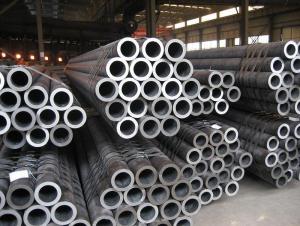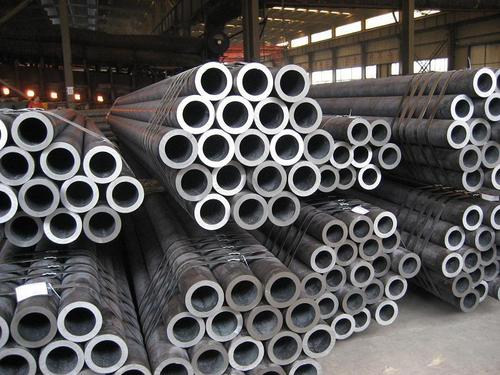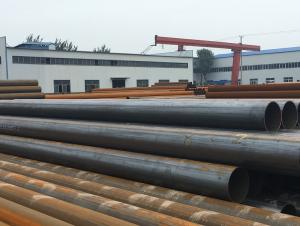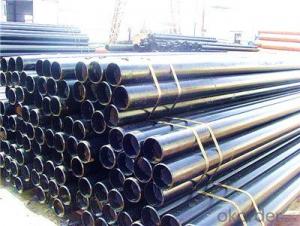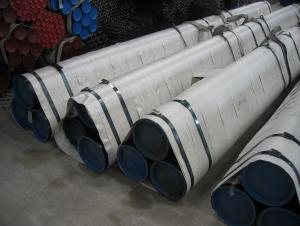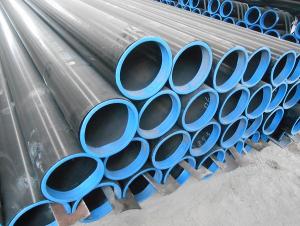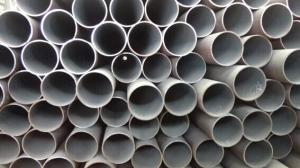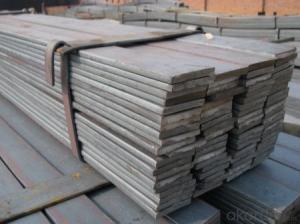Hot rolled seamless tube
- Loading Port:
- China Main Port
- Payment Terms:
- TT OR LC
- Min Order Qty:
- -
- Supply Capability:
- -
OKorder Service Pledge
OKorder Financial Service
You Might Also Like
Seamless pipe is a hollow section, no surrounding joint strip steel. The worldproduction of seamless pipe, a total of more than 5100 production plant more than 1850 companies in more than 110 countries under the production of oilpipe, which has more than 260 factory more than 170 companies in 44 countries under the.
Seamless tube with 1 structure (GB/T8162-2008) is used for seamless tubegeneral structure and mechanical structure.
Seamless pipe 2 fluid transport (GB/T8163-2008) is used for general seamless pipe conveying water, oil, gas and other fluid.
For low and medium pressure boiler seamless pipe 3 (GB3087-2008) is used in the manufacture of various structure of low and medium pressure boilersuperheated steam pipe, superheated steam pipe, boiling water pipe andlocomotive boiler flue tube, small pipe and brick arch tubes of high-quality carbon structural steel hot-rolled and cold drawn seamless pipe (rolling).
High pressure boiler seamless pipe with 4 (GB5310-2008) is used for heating surface tube boiler manufacturing high and higher pressure of high quality carbon steel, alloy steel and heat resisting stainless steel seamless pipe.
High pressure seamless tube with 5 chemical fertilizer equipment (GB6479-2000) is suitable for the work temperature of high quality carbon structural steel and alloy steel seamless tube of -40~400 DEG C, the working pressurefor chemical equipment and pipeline of 10~30Ma.
Seamless tube with 6 petroleum cracking (GB9948-2006) is applied to the oil refinery furnace tubes, heat exchangers and pipe seamless pipe.
Steel pipe 7 geological drilling (YB235-70) is for the Geological Department of the steel core drilling is used, according to use can be divided into the drill pipe, drill collar, core pipe, casing and sedimentation tubes.
Seamless tube with 8 diamond core drilling (GB3423-82) is used for seamlessdrill pipe, casing, Yan Xingan diamond core drilling.
9 oil drilling pipe (YB528-65) is used for seamless oil drilling internal upset ends or the outer thickening.
Seamless tube
Seamless tube
10 ships for carbon steel seamless pipe (GB5312-85)
China classification society rules for materials and welding -- ChineseClassification Society (CCS)
The Norway Classification Society (DNV) specification -- Norway Classification Society (DNV)
Lloyd's register of shipping (LR) specification -- British Lloyd's register of shipping (LR)
Germanischer Lloyd (GL) specification -- Germanischer Lloyd (GL)
American Classification Society (ABS) specification -- USA Classification Society (ABS)
Bureau Veritas (BV) specification -- French Classification Society (BV)
The Italy Classification Society (RINA) specification -- Italy Classification Society (RINA)
The Japanese classification society (NK) specification -- the Japaneseclassification society (NK)
The ship is making I level pressure piping, II level pressure piping, boiler and superheater for carbon steel seamless pipe. Carbon steel seamless pipe walltemperature does not exceed 450 degrees, alloy steel seamless pipe walltemperature more than 450 DEG C.
11 of automobile half shaft sleeve pipe seamless pipe (GB3088-82) is the manufacture of automobile half shaft sleeve and the driving bridge shell axis effective quality carbon structural steel and alloy structural steel hot-rolled seamless tube.
High pressure oil pipe with 12 diesel engine (GB3093-86) is a cold drawn seamless pipe manufacturing high-pressure diesel injection systems for.
With precision internal diameter seamless pipe 13 for hydraulic and pneumatic cylinder (GB8713-88) is the manufacture of hydraulic and pneumatic cylinderwith precision diameter with cold drawn or cold rolled precision seamless tube.
14 cold drawn or cold rolled precision seamless pipe (GB3639-83) is used fordimensional precision mechanical structure, hydraulic equipment, high and good surface finish of cold drawn or cold rolled precision seamless tube.Selection of precision seamless tube manufacturing mechanical or hydraulic equipment.
Stainless steel seamless tube with 15 structure (GB/T14975-2002) is widely used in chemical, petroleum, made of stainless steel hot-rolled textile, medical,food, machinery and other industrial anti-corrosion pipes and structural partsand components of a (extrusion, expansion) and cold drawing (rolling)seamless pipe.
Stainless steel seamless tube 16 fluid transport (GB/T14976-2002) is used for the transmission fluid made of stainless steel hot-rolled (extrusion, expansion)and cold drawing (rolling) seamless pipe.
17 special seamless tube is in addition to general seamless other cross section shapes of circular pipe outside the. According to the section of the steel pipe of different shapes and sizes can be divided into equal wall thickness of seamless pipe (codenamed D), unequal wall thickness of seamless pipe (codenamed BD), variable diameter special-shaped seamlesspipe (codenamed BJ). Shaped seamless pipe is widely used for variousstructural parts, tools and machinery parts.
Seamless steel tubes for 18 cryogenic pipe (GB/T18984-2003) is the use ofseamless steel tube for -45 to -195 DEG C low-temperature pressure vessellevel and low temperature heat exchanger tubes
General seamless tube is made with 10, 20, 30, 35 and 45 carbon steel 16Mnand 5MnV low alloy structural steel or 40Cr, 30CrMnSi, 45Mn2, 40MnB and other alloy steel hot-rolled or cold-rolled made. 10 and 20 low carbon steelseamless pipe is mainly used for fluid conveying pipeline. In 45, 40Cr in carbon steel seamless pipe used to make machine parts, such as automobile, tractorparts under stress. General seamless pipe to ensure the strength andflattening test. Hot rolled steel pipe in hot state or heat treatment delivery; cold with heat to heat treatment delivery. Seamless steel tubes for low and medium pressure boiler: used in the manufacture of a variety of low and medium pressure boiler, the superheated steam tube, boiling water pipe, superheated steam pipe, water wall tube and locomotive boiler flue tube, pipe and pipe arch bricks.
With high-quality carbon structural steel hot-rolled or cold-rolled seamless pipe(dial). Mainly used in 10, 20 steel manufacturing, in addition to ensure that the chemical composition and mechanical properties of the outer do pressure test,curling, flaring, flattening test. Hot rolled in hot state delivery, Leng Zha(allocated) to heat treatment delivery. Jiangyin Lubao Pipe Industry Co., Ltd. to provide seamless management of weight: seamless management of formula:(outside diameter and wall thickness) * wall thickness * 0.02466= seamless pipe weight per meter kg}
- Q: How are steel pipes inspected for compliance with industry standards?
- Steel pipes are inspected for compliance with industry standards through various methods such as visual examination, non-destructive testing techniques like ultrasonic testing, magnetic particle inspection, and radiography. These inspections help ensure that the pipes meet required specifications and quality standards, ensuring their integrity and safety for use in various industries.
- Q: What is the difference between seamless steel pipe and welded pipe?
- The thicker the diameter, the more commonly the spiral weld. The seamless steel pipe is generally molten state molten steel through the annular slot backlog, and then stretched and other treatment process, so that there is no weld. On the performance, especially the pressure capacity of the steel pipe than ordinary steel has greatly improved, so often used for high voltage equipment.
- Q: What are the common factors affecting the flow capacity of steel pipes?
- The flow capacity of steel pipes can be affected by several common factors. Firstly, the diameter of the pipe plays a crucial role. A larger diameter allows for a greater flow capacity because there is more area for the fluid to pass through. Secondly, the length of the pipe also affects flow capacity. Longer pipes tend to have higher frictional losses, which can decrease the flow capacity. Thirdly, the internal surface roughness of the steel pipe can impact flow capacity. Rough surfaces create more friction, resulting in a lower flow rate. Conversely, smooth pipes allow for smoother flow and higher flow capacity. The properties of the fluid being transported through the steel pipe are another important consideration. Factors such as viscosity, temperature, and density can all influence the flow rate. For example, highly viscous fluids have a lower flow capacity compared to less viscous fluids. Additionally, pressure drop along the length of the pipe is a significant factor. Friction, bends, and restrictions can all cause pressure losses, resulting in a lower flow capacity. The material of the steel pipe and its wall thickness also play a role. Different materials have varying properties that can impact flow rates. Moreover, thicker walls can reduce the internal diameter of the pipe, leading to a lower flow capacity. Lastly, the design and layout of the pipe system, including the presence of fittings, can impact flow capacity. Fittings such as valves, elbows, and tees can cause additional pressure drops and turbulence, reducing the overall flow rate. Considering these factors is essential when designing or evaluating a steel pipe system to ensure optimal flow capacity and efficiency.
- Q: How do you calculate the flow rate of water in steel pipes?
- To calculate the flow rate of water in steel pipes, you need to consider the pipe's diameter, length, and the pressure difference across the pipe. Using formulas like the Darcy-Weisbach equation or the Hazen-Williams equation, you can determine the flow rate by plugging in these variables along with the fluid properties.
- Q: What is the difference between standard wall thickness and extra-strong wall thickness steel pipes?
- Standard wall thickness steel pipes have a thickness that meets the minimum requirements set by industry standards, while extra-strong wall thickness steel pipes have a thicker wall, exceeding the minimum requirements. This difference in wall thickness makes the extra-strong pipes more robust, durable, and able to withstand higher pressure and stress compared to standard wall thickness pipes.
- Q: How do you repair a damaged steel pipe?
- To repair a damaged steel pipe, the first step is to assess the extent of the damage. Once identified, the damaged section can be cut out and replaced with a new piece of pipe. Alternatively, for smaller damages, patches or clamps can be used to cover the affected area. It is essential to clean and prepare the surface properly before applying any repair method, such as welding or epoxy. Seeking professional help is recommended for complex or extensive damages to ensure a safe and effective repair.
- Q: What are the applications of steel pipes?
- Steel pipes have a wide range of applications in various industries due to their durability, strength, and versatility. Some of the common applications of steel pipes include: 1. Plumbing and water distribution: Steel pipes are commonly used in plumbing systems to transport water and other fluids. They are resistant to corrosion and can withstand high pressure, making them ideal for water distribution networks in residential, commercial, and industrial buildings. 2. Oil and gas industry: Steel pipes are extensively used in the oil and gas industry for the transportation of oil, natural gas, and other petroleum products. They are able to handle high-pressure and high-temperature environments, making them crucial in drilling, production, and refining processes. 3. Construction and infrastructure: Steel pipes are widely employed in construction projects for various purposes such as structural support, foundations, scaffolding, and underground piping systems. They provide a strong and reliable framework for buildings, bridges, tunnels, and highways. 4. Industrial applications: Steel pipes are used in various industrial applications such as manufacturing, power plants, chemical processing, and food processing. They are often used to transport liquids, gases, or slurries within the production processes or to transfer heat in heat exchangers and condensers. 5. Agricultural sector: Steel pipes are commonly used in the agricultural sector for irrigation systems, particularly in large-scale farming. They are used to transport water from a water source to the fields, ensuring efficient and controlled water distribution. 6. Mining industry: Steel pipes are utilized in the mining industry for the extraction and transportation of minerals, ores, and other mining materials. They are resistant to abrasion and corrosion, making them suitable for the harsh and demanding conditions of mining operations. 7. Mechanical and automotive applications: Steel pipes find application in the manufacturing of various mechanical components, such as automotive exhaust systems, hydraulic cylinders, and precision tubing. They offer high strength, dimensional stability, and resistance to impact and vibration. 8. Infrastructure and utilities: Steel pipes are commonly used in infrastructure projects for the transportation of sewage, stormwater, and wastewater. They are durable, resistant to chemical corrosion, and can withstand underground conditions, making them suitable for sewer and drainage systems. In summary, the applications of steel pipes are vast and diverse, ranging from plumbing and water distribution to oil and gas industry, construction, agriculture, mining, mechanical and automotive sectors, and infrastructure projects. Their robustness, versatility, and ability to withstand extreme conditions make them a fundamental component in numerous industries.
- Q: What quota is reserved for buried DN20 steel pipe?
- If it is reserved for embedded pipe pre buried steel waterproof casing, set of waterproof casing steel production and installation is to set the quota items, if the outdoor installation of welded steel pipe buried steel casing pre quota items, if it is a reserved hole, then there is no need to set the quota items.
- Q: Are steel pipes suitable for underground irrigation systems?
- Yes, steel pipes are suitable for underground irrigation systems. They are durable, resistant to corrosion, and can withstand high pressure, making them a reliable choice for transporting water underground.
- Q: What are the different pipe fittings used with steel pipes?
- Some of the different pipe fittings used with steel pipes include elbows, tees, couplings, unions, reducers, flanges, and caps.
Send your message to us
Hot rolled seamless tube
- Loading Port:
- China Main Port
- Payment Terms:
- TT OR LC
- Min Order Qty:
- -
- Supply Capability:
- -
OKorder Service Pledge
OKorder Financial Service
Similar products
Hot products
Hot Searches
Related keywords
